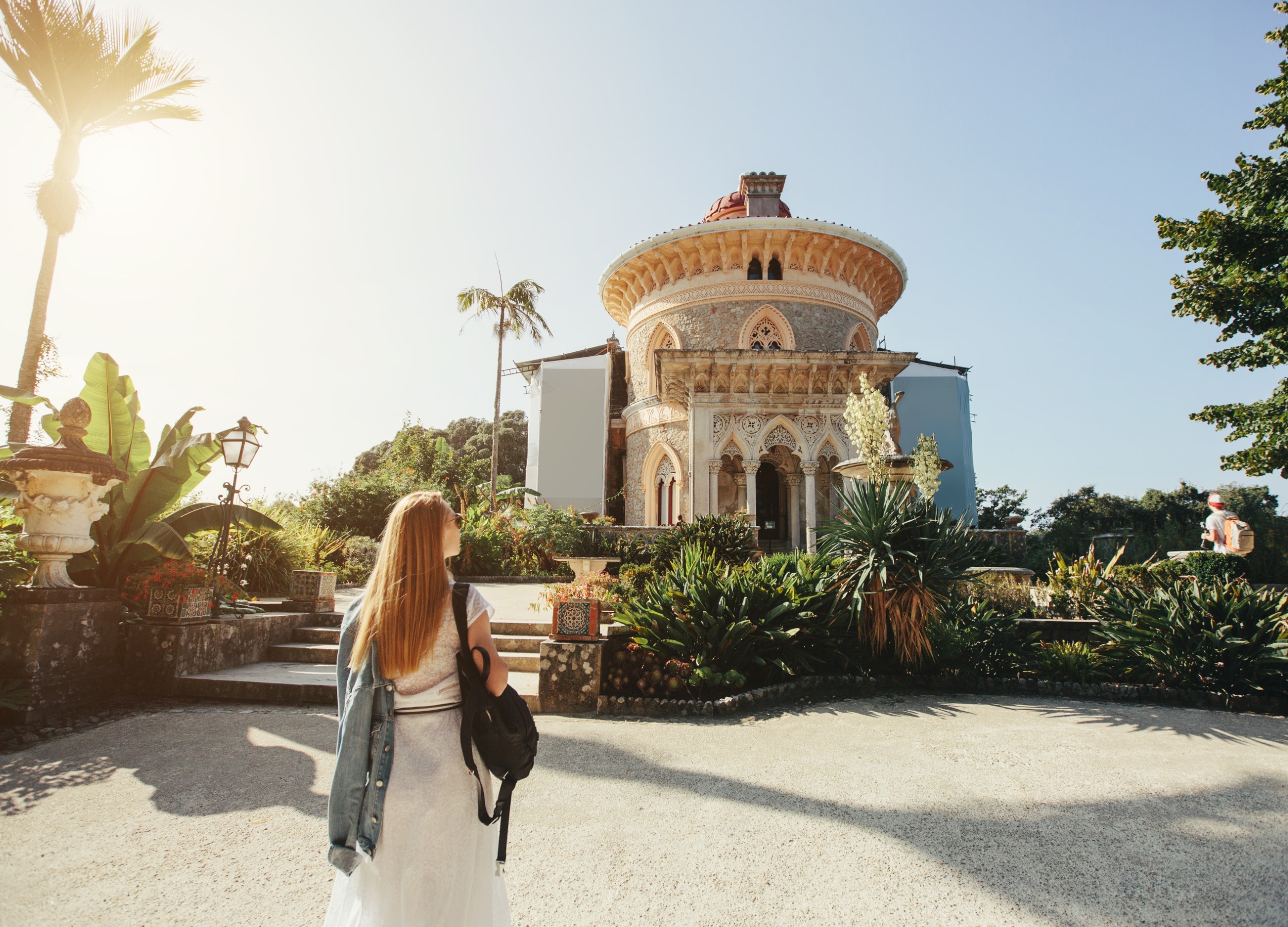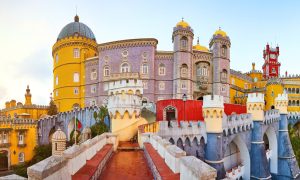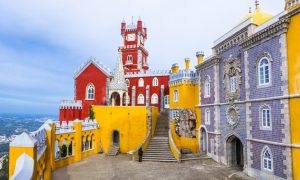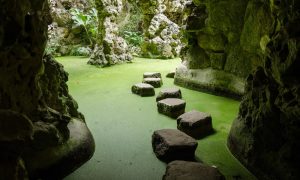Tucked away in the lush hills of Sintra, far from the crowds that flock to Pena Palace and Quinta da Regaleira, lies one of Portugal’s most exquisite and underrated treasures—Monserrate Palace. With its dazzling blend of Gothic, Moorish, and Indian influences, this 19th-century palace is a masterclass in Romantic architecture. Surrounded by one of Europe’s finest botanical gardens, Monserrate offers visitors an experience that is both historically rich and visually breathtaking. Let’s dive into its fascinating history, highlights, and everything you need to know to plan your visit.
The Fascinating History of Monserrate Palace
The history of Monserrate is as layered as its architectural styles. The land where the palace now stands has been known for centuries, initially as a small chapel built by the Moors. Later, during the 16th century, a larger estate was developed, but it wasn’t until the 19th century that Monserrate became the extraordinary creation we see today.
In 1856, Francis Cook, an English merchant and art collector, purchased the property. Cook had a vision of turning Monserrate into a summer retreat that reflected his eclectic tastes. He hired the English architect James Knowles to design a palace that would blend various styles, from Gothic towers to intricate Indian-inspired domes. The result is a palace that feels more like a jewel box, shimmering with intricate details in every room and on every facade.
While the palace is stunning in its own right, it’s the gardens of Monserrate that truly steal the show. Under Cook’s direction, the surrounding park was transformed into a botanical masterpiece, with rare plant species brought from all over the world. Today, Monserrate Palace and its gardens remain one of the finest examples of the 19th-century Romantic movement in Portugal.
Highlights of Monserrate Palace
1. The Architectural Splendor
Monserrate Palace’s design is a harmonious fusion of styles, resulting in an exotic and deeply atmospheric structure. Here are some key architectural features to look out for:
- Moorish Arches and Domes: The palace’s entrance is framed by ornate Moorish-style arches, and its central dome, with delicate latticework, draws clear inspiration from Indian architecture.
- Gothic Elements: Gothic towers and turrets lend a sense of drama and height to the palace, contrasting beautifully with the ornate domes and terraces.
- Richly Decorated Interiors: Step inside to discover intricately carved ceilings, stucco motifs, and stained-glass windows that cast soft, colorful light across the rooms. Particularly striking is the Music Room, whose acoustics and visual grandeur have made it a favorite spot for intimate concerts.
2. The Exotic Gardens
The sprawling botanical gardens that surround Monserrate Palace are nothing short of extraordinary. Covering 33 hectares, they were designed to enhance the natural beauty of the estate while showcasing rare and exotic plant species from across the globe.
- International Plant Collections: The garden is divided into distinct sections, with plants from various parts of the world. Wander through the Mexican Garden, where towering cacti and agaves thrive, or explore the Fern Valley, a lush, tropical paradise.
- The Rose Garden: A romantic highlight of the park, the Rose Garden features a vast array of species, blooming in a rainbow of colors and filling the air with their fragrant scent.
- The Waterfalls and Lakes: As you explore, you’ll come across tranquil streams, waterfalls, and reflective lakes, all designed to complement the surrounding vegetation.
- The Ruins: Hidden among the trees are the charming artificial ruins, designed in the style of ancient structures, adding an element of mystery and discovery to the gardens.
3. The Romantic Atmosphere
Monserrate is quieter than Sintra’s more famous sites, making it a perfect escape for those looking to immerse themselves in the serene beauty of nature and the grandeur of the past. The palace and gardens are ideal for leisurely strolls, with numerous benches and viewpoints where you can sit, relax, and take in the breathtaking scenery.
Opening Times and Ticket Information
Planning your visit to Monserrate Palace is simple, but here’s the essential information:
Opening Hours
- Summer Season (March 25 – October 29):
- Palace and Gardens: 9:30 AM – 7:00 PM (last entry at 6:00 PM)
- Gardens: 9:00 AM – 7:00 PM (last entry at 6:00 PM)
- Winter Season (October 30 – March 24):
- Palace and Gardens: 10:00 AM – 6:00 PM (last entry at 5:00 PM)
- Gardens: 9:00 AM – 6:00 PM (last entry at 5:00 PM)
Ticket Prices
- Palace and Gardens:
- Adults (18-64 years): €8
- Youth (6-17 years): €6.50
- Seniors (65+ years): €6.50
- Family Ticket (2 adults + 2 youth): €26
- Children under 6 years: Free
- Gardens Only:
- Adults: €6.50
- Youth: €5.50
- Seniors: €5.50
Tickets can be purchased at the entrance or online via the Parques de Sintra official website, where you’ll also find information on guided tours.
Getting to Monserrate Palace
Monserrate is located about 3.5 kilometers from the historic center of Sintra, and there are several ways to get there:
- By Car: There is a small parking lot near the palace, but spaces can be limited, especially during peak season.
- By Bus: The Scotturb bus 435 connects Sintra town center and the train station to Monserrate. The bus route also includes stops at other major sites like Quinta da Regaleira, making it a convenient option for exploring the area.
- On Foot or by Bike: For those who love hiking or cycling, the scenic trails leading through the Sintra mountains make for an enjoyable route to Monserrate.
Visitor Tips
- Arrive Early or Late: To enjoy the palace and gardens in relative peace, try to arrive early in the morning or late in the afternoon when the crowds have thinned out.
- Wear Comfortable Shoes: The gardens are vast and full of winding paths, so comfortable footwear is a must.
- Pack a Picnic: While there is a small café at Monserrate, bringing your own picnic allows you to fully take advantage of the serene gardens. There are plenty of spots where you can sit and enjoy a meal surrounded by nature.
- Bring a Camera: Monserrate’s architecture and gardens are incredibly photogenic, offering countless opportunities for stunning photos.
- Explore the Gardens: Don’t limit your visit to the palace alone. The gardens are a highlight, with something new to discover around every corner—from waterfalls to secret groves.
Conclusion
Monserrate Palace and Gardens may not be as famous as some of Sintra’s other attractions, but their beauty and tranquility make them one of the most rewarding places to visit in the region. Whether you’re an architecture enthusiast, a history buff, or simply looking for a peaceful escape into nature, Monserrate offers an unforgettable experience that is steeped in the romance and mystery that define Sintra.
So, when planning your next trip to Sintra, make sure Monserrate Palace is on your list—you won’t regret it!





















